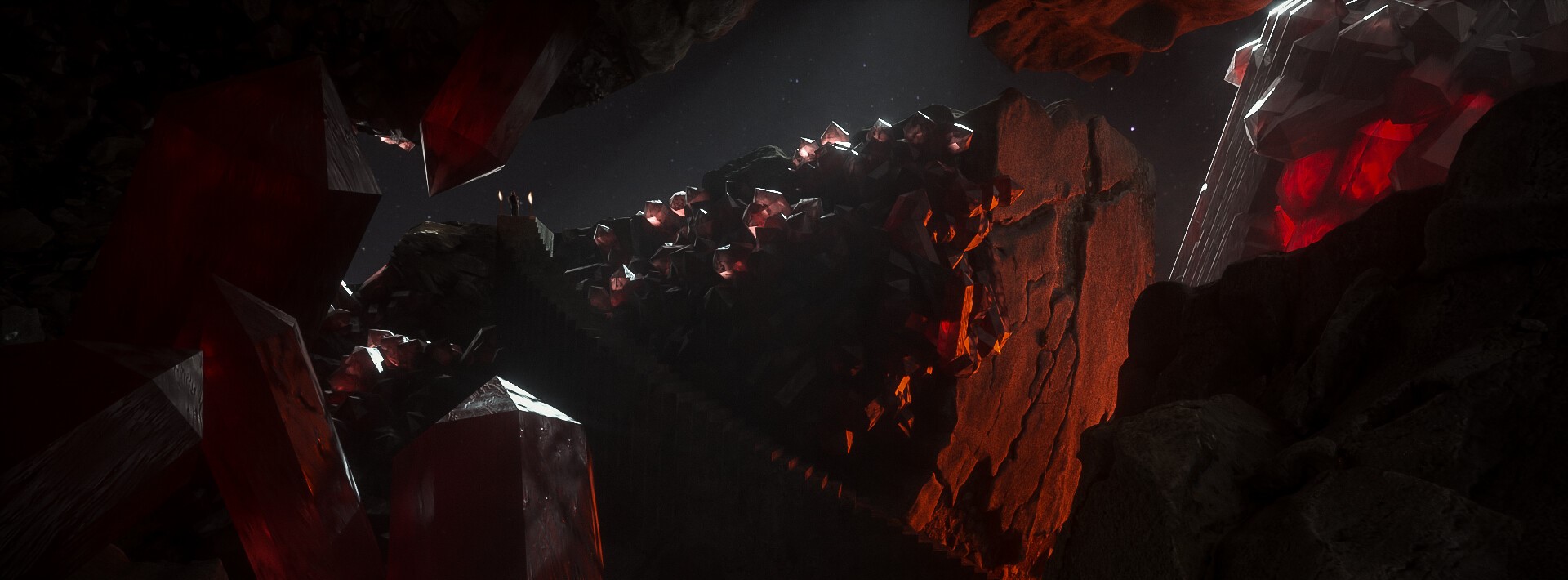Axis
by hughpierre
An axis is a short narrow tapering monument with a square or rectangular cross section made of crystallized sap that ends in a pyramidal or flat top.
Manufacturing process
Solidification Formation
Eons of high pressures and temperatures produced by rock rains impacting secretions of honeydew lain on the mountain floor.Carving Procedure
The cartouches are done directly on the surface of the crystal on the ground on all sides.- Groves that outline the ultimate shape are "pounded out" by hitting with small balls of basalt.
- After which the sides are wedged with wooden spikes then wetted to saturation and bursting the gem along the line.
- The rough side is smoothed down.
Transporting
Every piece meant to be exported reaches the height at the shoulders; and is padded and carried in rollers and down the Step's rivers.Significance

Crystal Cave by Chris Keßler
Tuskin
It is thought that the reason there was so much sap hidden away in spots of the Bad Slopes is that it was industrially collected and traded as a barter item.Step Folk
Caves and grottoes of the dirty gems dot secret places in the Long Step's territory. Until valley demand rose, the native folk ignored the material as a commodity. Though when heated in an oil-bath, becomes soft and flexible to be used in making cheap jewelry or as a sweet candy; thousands upon thousands of years old as the Tuskin once tasted.Sang
When Sang traders first came across the crystallized sugar, they sampled it as a rock candy and reported it has such to the Sacred Precinct. But some nobles thought it would be excellent decorative materials for their manses, parks and the Tepeyac Causeway.
Alternative Names:
- Pātzcatl Tetl
- Cōzamālōtl Tehuilotl
Item type
Raw Material
Current Location
Manufacturer
Owning Organization
Rarity
When the crystal solidifies, it is transparent and colourless.
Then later turns green, yellow, blue, red, brown or orange depending on what seeps into it from the surrounding environment.
Raw materials & Components
Hard translucent fossilized honeydew produced by extinct giant aphids
Tools
- Stone Hammer
- Wooden Wedges
Related Myths




Sounds delicious!